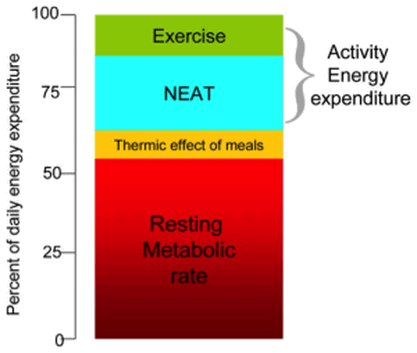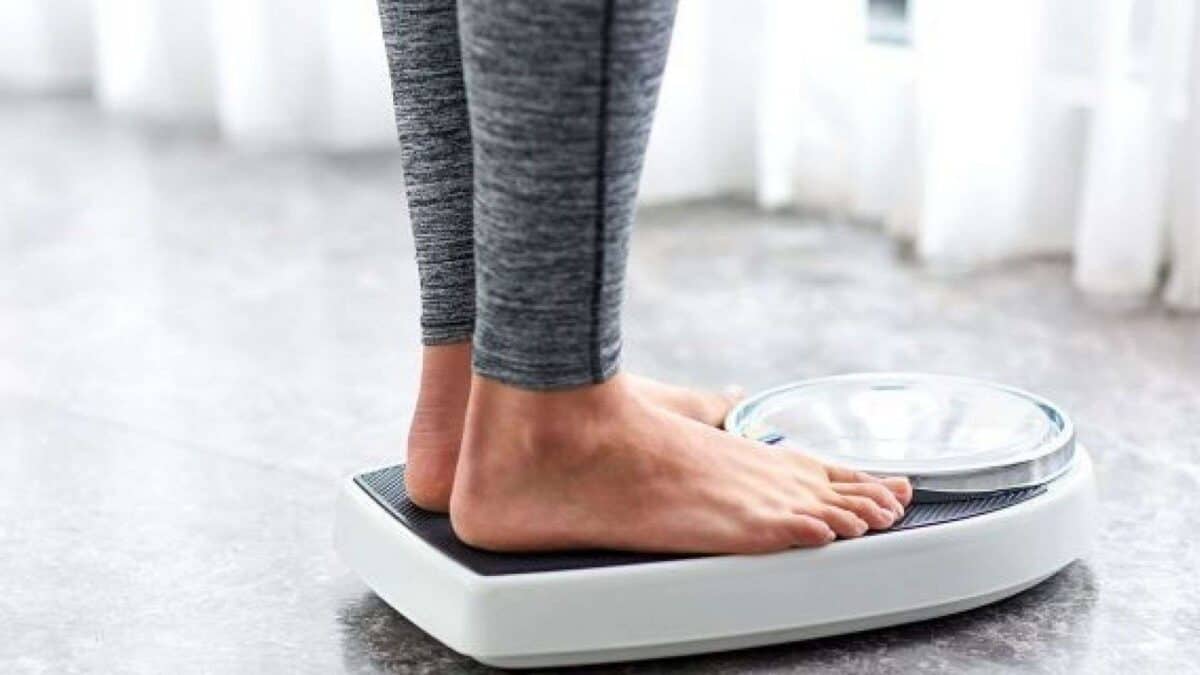In this article we provide information about basal metabolism rate calculator and possible ways to calculate it to know your body and have a starting point about it.
Imagine that your training is perfectly planned and you do it without hesitation and without missing a single day. At the hormonal level the balance is also perfect and the time you spend resting complies with all the recommendations to achieve the goal you are aiming for.
Imagine that, in this hypothetical case, the only thing you are not controlling is your basal energy expenditure, i.e. the calories your body consumes simply because you are alive.
Not taking this into account could be a serious mistake, which would surely hinder your progress, because you could end up not knowing how many calories your body needs to function properly, and in this article we will address some of these issues so you can learn how your body works and how you can use it to your advantage.
And is that, according to the specialist Blasco, R. (2015) in a review published in the Journal of Community Nutrition in 2015, this basal intake is around 60-70% in sedentary adults and over 50% in adult athletes.
Basal metabolism and has a certain relationship with age. As we get older, basal metabolism tends to decrease. However, this effect is easily reversible and modifiable depending on the lifestyle we lead.
What is basal metabolism?
Basal metabolism is the amount of calories your body needs to perform its most basic (basal) life-sustaining functions.
Basal metabolism is the energy a person needs at rest. Or put another way, the minimum calories the body needs on a daily basis to keep functioning.
Basal metabolic rate, also known as BMR, is the amount of energy your body burns at rest each day.
In other words, it is the amount of calories needed to keep your body functioning while you are not doing any physical activity.
Putting basal metabolism rate calculator in context
Before we show you information about basal metabolism, we want to contextualize basal metabolic rate. Metabolism can be divided into several categories and basal metabolism falls into one of them.
- Basal metabolic rate (BMR): as mentioned above, this corresponds to the minimum metabolic rate necessary to maintain lung respiration, heartbeat, brain activity, etc.
- Resting metabolic rate (RMR): the minimum metabolic rate required to keep you alive and functioning while at rest. On average, it represents up to 50-75% of total calorie expenditure(scientific study).
- Thermic effect of food (TEF): the amount of calories burned while your body digests and processes food. TEF generally accounts for about 10% of your total energy expenditure(study).
- Thermal effect of exercise (TEE): the increase in calories burned during exercise.
- Non-exercise activity thermogenesis (NEAT): the amount of calories needed for activities other than exercise. This includes restlessness, posture change, standing and walking(study).
Metabolic rate is also known as calorie expenditure. It is the amount of calories your body uses in a given period of time.
What is the function of basal metabolism?
Basal metabolism is a process that takes place constantly in our body. It consists of a set of chemical reactions that take place in the cells of our body.
Basal metabolism plays an important role in the tendency to increase or decrease our fat percentage.
Basal Metabolism Calculator
It was 1919 when the researcher Harris Benedict suggested the formula for calculating the basal metabolism that even today, a century later, is the most widely used formula for calculating the basal metabolic rate, despite the fact that some researchers such as Vargas, M et al. considered that it overestimated the expenditure by around 10-15%.
If you want to see all our nutritional calculators you can see them by clicking here.
How do I know what my basal metabolism is?
This formula analyzes your sex, height and age, as well as your level of physical activity to calculate the calories your body consumes daily.
- Men: BMR = 88.362 + (13.397 x weight in kg) + (4.799 x height in cm) – (5.677 x age)
- Women: BMR = 447.593 + (9.247 x weight in kg) + (3.098 x height in cm) – (4.330 x age)
Other formulas for calculating basal metabolic rate
In addition to the classic Harris-Benedict formula, there are many other formulas for calculating basal metabolism.
This is very interesting since these formulas simply estimate your metabolism and this makes them not 100% accurate. For example, the formula we have seen above tends to overestimate basal calories when you are overweight.
That is why, if we use 2 or 3 different formulas to get an average, we will have a result much closer to reality.
Among all the existing formulas, the most outstanding ones, together with the Harris-Benedict formula, would be:
Mifflin-St George formula
The Mifflin-St George formula is shown below.
- Male Metabolism = 66.473 + (13.751 x Weight) + (5.0033 x Height) – (6.7550 x Age)
- Metabolism Women = 655,1 + (9,463 x Weight) + (1,8 x Height) – 4,6756 x Age)
Katch-McArdle Formula
If you have a bioimpedance scale, or your nutritionist and trainer have measured you with a lipocaliber, this formula can be of great help to you, as it takes into account values such as fat mass and lean mass, which makes it a little more accurate than the previous ones.
- Metabolism: 370 + (21.6 x Lean body mass in kg)
Simple formula
This formula, although not highly recommended for its simplicity, can be interesting to get a quick and basic idea of how much your metabolism consumes.
- Metabolic Rate Men = 1 calorie x Body Weight x 24 Hours
- Metabolic rate Women = 0.9 calories x Body weight x 24 Hours
Can I increase my basal metabolic rate?
Of course you can increase your basal metabolism, and this is where another concept that has become quite popular in recent years comes into play: the NEAT.
NEAT is short for Non Exercise Activity Thermogenesis, i.e. thermogenic activity not associated with exercise.
In layman’s terms, NEAT would be all the activities in your daily life that are not part of your training as such.
These non-training activities would include commuting to work, taking the stairs when you get home instead of the elevator, or completing the recommended 10,000-12,000 steps per day.
Increasing your NEAT will result in an increase in calories consumed daily, although it does not necessarily mean an increase in your basal metabolism.
In order to increase energy consumption or basal metabolism, strength training and high-intensity cardiovascular training are your best allies.
These lighter cardiovascular exercises, or daily physical activities despite offering other benefits, do not have the ability to increase your basal metabolism as much as strength training.
How can I activate my basal metabolism?
Here are some tips on how to increase your basal metabolism:
Develop your muscles
Strength training is key if you want to increase your metabolism. Focus the basis of your training on strength exercises. The explanation is that muscle is a very metabolically active tissue, so if you gain muscle mass, your body will consume more calories throughout the day.
Stay active throughout the day
Biking or walking to work, taking the stairs, or doing small pills or mini workouts throughout the day will help increase your metabolism.
Prioritize short bursts of intense exercise over long duration, low intensity exercise.
You’re probably familiar with HIIT or high-intensity interval training methodology. This type of training protocols are characterized by combining exercises performed at high intensity but in a short period of time.
This generates an interesting increase in post-exercise energy expenditure. Therefore, combining Hiit with strength exercises to increase your musculature can be a super effective tool.
Avoid losing weight abruptly.
Although each personal case is different and it is difficult to generalize, as a general rule, avoiding sudden weight loss will allow your whole body to get used to its new situation gradually, maintaining a balance that will allow your metabolism to adapt better.
Get adequate rest
Maintaining proper rest habits is essential for a better overall balance in your body.
Some studies such as the one by Atienza-Sánchez, L. and Celdrán-Quecedo, R. (2016), saw how lack of sleep or sleep disturbance can be directly related to alterations in metabolism due to the cyclic behavior of certain hormones.
What should my basal metabolism be?
Basal metabolic energy is used to carry out vital functions of our body.
For most healthy adults, basal metabolism represents between 50-70% of total energy expenditure.

.
Practical Example: How can I use my basal metabolism data to lose fat or gain muscle mass?
Although this question could be the subject of a whole other article, let’s look at how we can use total energy expenditure to get a little closer to our goal.
In addition to basal metabolism, when it comes to gaining or losing weight, it is important that you take into account 2 other concepts that come into play:
- On the one hand, the NEAT as we have seen before + the physical exercise you do.
- On the other hand, the thermal effect of food, which is usually around 10% of what you consume.
So, the total calories your body would need each day would be the sum of basal metabolism + thermal effect of food + daily activity and physical exercise, and this is what is known as Total Energy Expenditure (TEE).
Let’s take an example, for which, we are going to use as a reference the image 1 to make the calculations:
- The basal expenditure of 1697 kcal.
- Imagine that daily you spend 600 kcal more between physical exercise and your daily activity. This figure, although approximate, can be easily obtained with virtually any wearable device on the market, such as bracelets or heart rate monitors, even with mobile health and training applications.
- Finally, we add an extra 10% for the thermal effect of food, which, although it is not the same for all macronutrients, is generally calculated at around 10%.
The total calories your body would consume daily following the example would be:
- 1697 + 600 + (230 approx Thermal effect) = 2527 kcal daily.
Knowing this data, we can now adjust our diet so that, in an approximate way, it will take us towards our goal.
Thus, if we want to maintain our weight, we would consume an amount of calories close to 2527, if we want to lower it we will generate a small caloric deficit and if we want to increase it, we would only have to generate a small super habit with respect to the calories ingested.
Studies carried out to date show that burning 7500 kcal would be equivalent to losing or gaining around 1 kg of body weight.
Hence, especially in programs focused on weight loss, a small daily caloric deficit is recommended to get closer to that weekly or biweekly loss by combining the expenditure generated by exercise and the deficit in the diet itself.
In this way, it would be possible to lose weight progressively, reducing the chances of suffering the dreaded rebound effect, so common in very aggressive and restrictive diets.
Obviously, the body does not work like a calculator, since in a weight loss process, for example, a multitude of other factors influence, which makes the process not as linear as some people believe.
And although this means that there will be moments where we will lose more, and others where there will be some stagnation, (fortunately or unfortunately, the body is not a calculator where 2+2 are 4), if the process is done correctly, there will be a trend depending on the objective we are looking for where we can see that we are getting closer to the desired goal.
Conclusions
In this article we analyzed the basal metabolism, but you should know that the body does not work as an exact calculator, and that there are multiple variables that affect your body.
In fact, these estimation formulas were ‘discussed’ in a symposium held in Vienna in 2019, precisely commemorating the centenary of Harris Benedict’s formula, and the conclusion was basically that these formulas help to have a reference, but they are generic, and therefore, approximate.
However, their use is ideal to know how your body works and to have the basis so that you can gradually make adjustments consciously.
In this way, you can gradually improve and achieve results without getting frustrated.
Bibliographic references
- Vargas Z, M., Lancheros P., L., & Barrera P., M. D. P. (2011). Resting energy expenditure and body composition in adults. Journal of the Faculty of Medicine, 59(1), 43-58.
- Blasco, R. (2015). Resting energy expenditure. Assessment methods and applications. Rev Esp Nutr Comunitaria 2015;21(Suppl. 1):243-251 ISSN 1135-3074.
- Bendavid, I., Lobo, D., Barazzoni, R., Cederholm, T., Coëffier, M., de van der Schueren, M., Fontaine, E., Hiesmayr, M., Laviano, A., Pichard, C. and Singer, P., 2021. The centenary of the Harris-Benedict equations: How to assess energy requirements best? Recommendations from the ESPEN expert group.
- Hanna, K.M., Antunes-Ruth, F., Santos-Rita, A., Boscolo-Orlando, F.A., Bueno-Marco,T., (2005). Análise de taxa metabólica basal e composição corporal de idosos do sexo masculino antes e seis meses após exercícios de resistência. Rev Bras Med Esporte 11 (1) – Feb, 2005.



